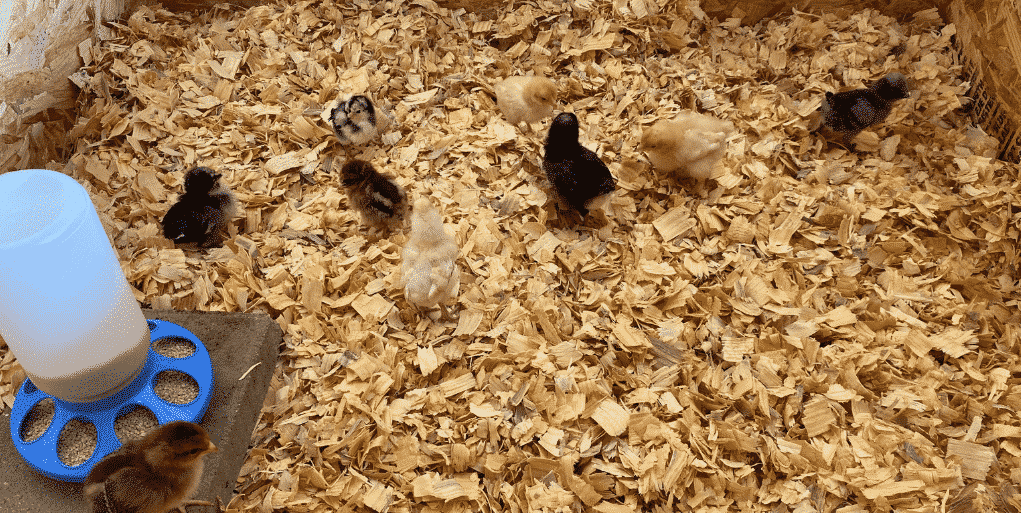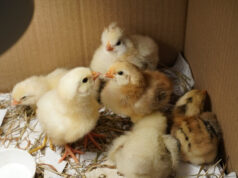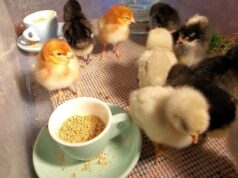Transitioning chicks off a heat lamp is a crucial step in raising healthy poultry. Whether you’re a seasoned farmer or a beginner with your first batch of chicks, knowing when and how to transition chicks off heat can make all the difference. The goal is to ensure the chicks are ready for the change, building resilience and independence crucial for their growth.
Starting with the right equipment in your chick farm is essential, and understanding chick brooder checklist ensures you are prepared from the beginning. Clear the obstacles by learning not just when to move chicks but also timing their transition correctly.

Importance of Gradual Transition
Chicks need a specific environment to thrive. As they grow, their need for heat decreases. A gradual transition mimics their natural development, providing a better adjustment period as they become more resilient to temperature changes.
Understanding Chick Temperatures
Its vital to understand the temperature needs of chicks at different ages. Initially, chicks require around 95F (35C), reducing gradually by 5F each week until they are entirely feathered and capable of adapting to the ambient air temperature.
Signs They Are Ready
Observe the chicks for signs of feathers replacing down, reduced huddling under the heat lamp, and increased activity levels, which all indicate readiness to adjust fewer heat conditions. Careful evaluation of these factors will guide you, helping ease their transition.
Creating the Ideal Brooder Environment
Ensuring a proper chick brooder setup beforehand can significantly determine the success of transitioning. Make sure there is free access to food and water and minimal drafts to preserve warmth as they still adapt to new temperatures.
Monitoring and Adjusting Heat
Keep an eye on how the chicks react to changing conditions, using thermometers and observing their behavior closely. Adjust the heat lamp height or wattage where necessary. This supervision ensures comfort and optimum growth during transition.
Technology and Gadgets
Technology advancements provide a range of gadgets, such as automated heat lamps or digital thermometers, making it easier for you to monitor these transitions effectively. Make use of available tools to ensure your chicks have the best possible environment for growth.
Chick Health and Welfare
Keep their health in check with regular health monitoring. Provide nutritious feed, such as those discussed at understanding chicken brooders. A healthy diet supports their immune system during transitional stress.
Providing Appropriate Housing
Once off heat lamps, maintaining suitable housing that provides protection against weather fluctuations is vital. Ensure the housing is well-ventilated yet secure against predators, pests, and harsh weather.
Common Mistakes to Avoid
Avoid abrupt changes and cold temperatures. Rapid changes can cause stress and hinder chick development. Thoroughly research and plan transitions, avoiding serious mistakes by understanding common pitfalls when managing their needs.
Community and Expert Advice
Engage with poultry communities or seek expert advice for shared insights on successful transitions. They often provide tailored advice that can be invaluable for understanding complex behaviors or addressing specific challenges with your chick rearing.
Final Tips and Safety Notes
Prioritize chick safety by double-checking electrical connections and securing heat lamps. These details make a significant difference, creating a safe, warm environment enabling chicks growth and well-being.
Encouraging Natural Behavior
Gradually allowing chicks exposure to natural daylight and outdoor environments encourages natural behaviors. This exposure is crucial for their mental and physical development, fostering a healthy growth cycle as they mature into adult chickens.
Adapting and Monitoring
Observe, evaluate, and make necessary adjustments to their environment periodically. This monitoring ensures you meet any developmental, dietary, or environmental changes as needed for optimal growth and health.
Using Natural Cues
Taking cues from nature, such as seasonal changes, informs about potential temperature settings in their environment. Aligning these actions with natural patterns encourages healthy habitat transitions from heat lamps.

Faqs About Transitioning Chicks
1. What age should chicks be weaned off heat lamps?
Chicks are typically ready to be weaned off heat lamps by 6 to 8 weeks of age, once they are fully feathered.
2. How do chicks react when too cold?
Chicks often huddle together, making distressed chirping sounds indicating discomfort due to low temperatures.
3. Can chicks be outside without a heat lamp?
Fully feathered chicks can usually venture outside without a heat lamp once daytime temperatures are consistently above 70F (21C).
4. How to make their transition easiest?
Gradually reduce heat, observe behavior, and maintain a stable environment to ease their transition. Seek community tips for unique rearing insights.
This article contains affiliate links. We may earn a commission at no extra cost to you.










